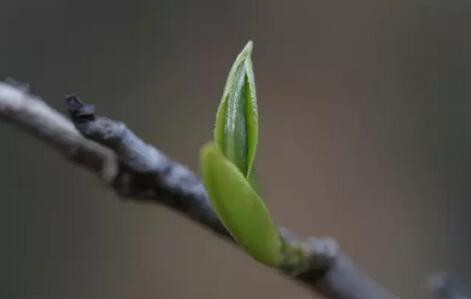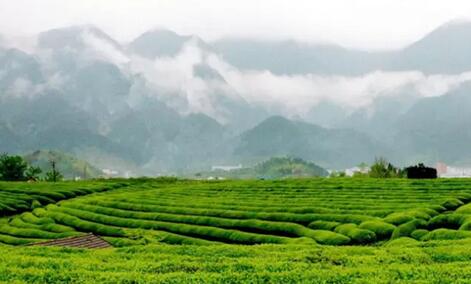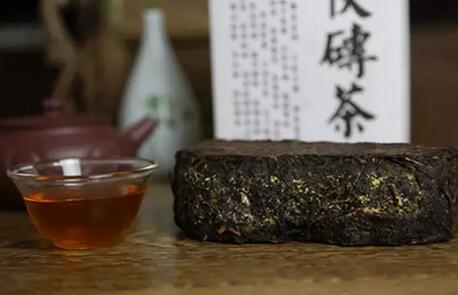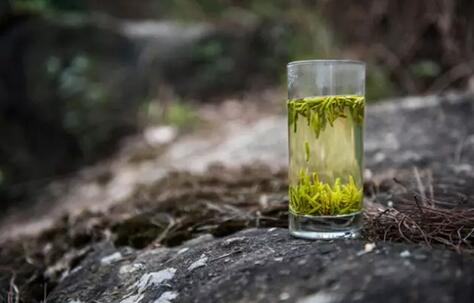Unconsciously, it's time for the spring tea harvest again. Early teas from places like Yibin are already fresh and available, allowing people to enjoy the first taste of the season.
People often say, 'Drink tea fresh, age wine.' But is this really true? Is spring tea safe? Is new tea better than aged tea? How should tea be stored properly? What kind of water is best for brewing new tea? These questions often trouble tea enthusiasts. Today, we’ll explore these issues one by one to provide answers and clarity.

Spring tea has fewer pests and diseases
With severe smog and air pollution in many areas, some worry that drinking tea may not be safe. Pesticide residues, heavy metals, and harmful microorganisms are the main safety concerns in tea.
It’s reported that pyrethroid pesticides are primarily used for pest control in tea gardens. These pesticides are poorly soluble in water, with less than 10% of the residues detected in dry tea leaching into the brewed tea.
Moreover, in many tea regions, especially those producing premium green tea, the cooler temperatures during spring reduce pest activity, eliminating the need for pesticides.
Additionally, the most critical heavy metal indicator in tea is lead content. The leaching rate of heavy metals into tea is very low—for example, only 18% of lead leaches out after three steepings. China has strict regulations on heavy metal content in tea. During processing, tea undergoes high-temperature roasting or baking, effectively eliminating harmful microorganisms.
Generally, the average daily tea consumption in China is less than 10 grams, with low intake levels. Combined with the low leaching rates of pesticides and heavy metals, the amounts ingested through tea are less than 5% of the daily allowable intake. Therefore, drinking tea is safe.

Spring tea isn’t just green tea
Many assume spring tea is only green tea, but it mainly consists of bud teas, with green tea being the most common. Other tea types are also harvested and produced during this period.
Tea is categorized by season into spring, summer, and autumn teas. Spring tea refers to the first flush of tea leaves after winter, typically harvested before the end of May. Besides famous green teas like West Lake Longjing, Dongting Biluochun, Huangshan Maofeng, and Lushan Yunwu, other teas like Anxi Tieguanyin (a rock tea) are harvested between late April and May. Meanwhile, Pu'er tea from Yunnan’s Ban Zhang region is harvested as early as mid-March. Thus, spring tea isn’t limited to green tea.

Is new tea always better than aged tea?
The saying 'tea is best when fresh' is common, but not all new teas are superior to aged ones. Freshly harvested spring tea contains high levels of unoxidized polyphenols and aldehydes, which can irritate the gastrointestinal tract and cause discomfort.
Additionally, new tea has higher concentrations of caffeine, active alkaloids, and aromatic compounds, which may overstimulate the nervous system, leading to symptoms like weakness, cold sweats, and insomnia—known as 'tea drunkenness.' Those with neurasthenia or cardiovascular diseases should be especially cautious.
Experts recommend storing spring tea for at least half a month before drinking. This allows polyphenols to oxidize naturally, reducing stomach irritation and improving flavor, sweetness, and digestibility. For example, newly roasted Longjing tea develops a better aroma after aging in a lime jar for a month or two. Meanwhile, Pu'er, Liubao tea, Fu brick tea, and oolong tea can retain their rich aroma and mellow taste if stored properly, even after a year.

Spring tea can be refrigerated
Spring tea is made from the freshest and most tender tea buds, preserving the tea’s original essence and making it particularly delicate. Proper storage is crucial to maintain its freshness. Improper storage can lead to loss of flavor, color, and aroma, reducing its value. Well-preserved tea, even after a year or two, can still taste as fresh as new when brewed.
Experts explain that the four key factors affecting tea storage are temperature, humidity, oxygen, and light. Ideal conditions include low temperature, low humidity, oxygen-free, and dark environments.
Most commercial tea comes packaged. After purchase, avoid unsealing it. For home storage, refrigerating the tea is effective, while freezing offers even better preservation. For large-scale storage, a 1–5°C cold storage is cost-effective and maintains tea quality long-term.
When refrigerating tea, prevent odor contamination and ensure the tea is thoroughly dry. Store tea in clean, odor-free containers, separate from other foods to avoid flavor transfer.
Additionally, avoid buying overly damp spring tea, as it’s prone to mold and spoilage.

Spring water is best for brewing tea
Water for brewing tea should be clean and odorless, with a pH of 5.5–7 and hardness below 10 degrees.
Among water types, spring water is ideal, followed by purified water. Soft water is preferable, as hard water contains minerals that can affect tea quality. For instance, iron-rich water darkens the tea, while calcium-rich water makes it bitter. Water hardness influences pH, and tea is pH-sensitive—especially alkaline water, which oxidizes catechins, darkening the tea or turning it reddish-brown.
Savoring the first cup of spring tea is a delightful way to embrace the season. After reading this, do you feel more informed about spring tea’s characteristics and related knowledge?